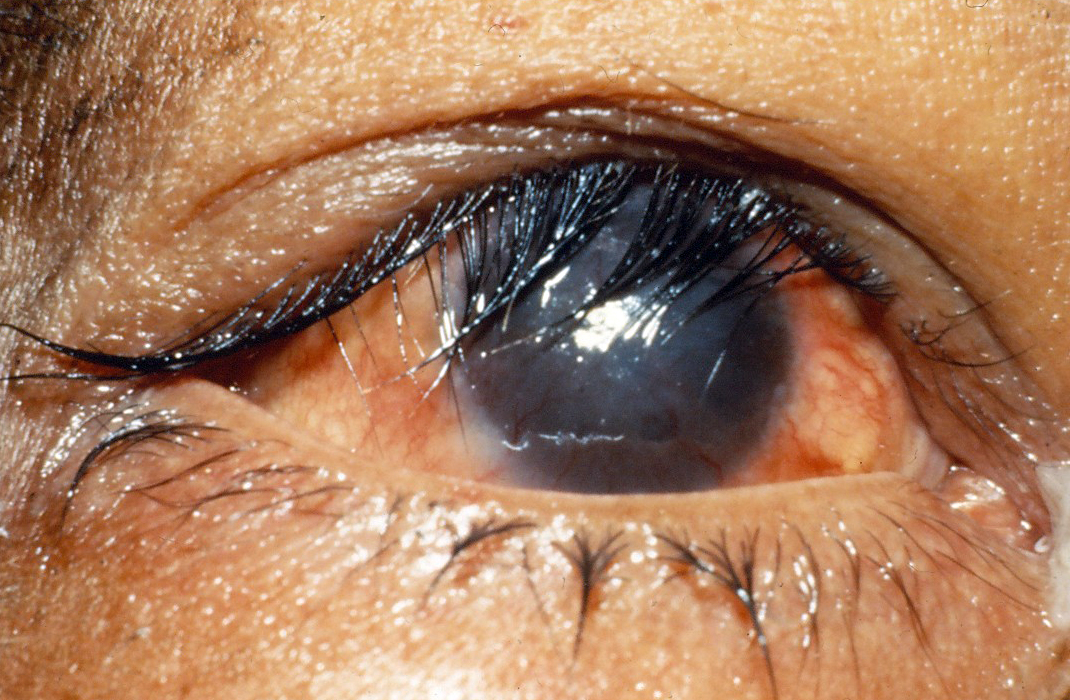Last Updated: March 18, 2023
What is trichiasis?
The term trichiasis describes the condition in which one’s eyelashes turn inwards. The eyelids normally have a single row of eyelashes on the upper and lower lids. The lashes typically point outwards, away from the eye. Sometimes the lid margin can turn inwards causing one or more lashes to scratch the cornea (clear covering of the eye) or the conjunctiva (thin layer of clear tissue that covers the white of the eye). This will result in eye pain ranging from mild to moderate, redness, and excessive tearing. Most patients who suffer from this condition will experience several attacks per year.

Image courtesy of The International Centre for Eye Health www.iceh.org.uk, London School of Hygiene & Tropical Medicine.
What causes trichiasis?
Aging is the most common cause of trichiasis, since the skin loses its elasticity with age. Most patients who experience this condition will have several attacks per year. Scarring due to mechanical trauma, chemical burns, previous eyelid surgery and ocular inflammation can also cause the lid margins to curl towards the eyeball.
Some children, primarily those of Asian descent, may be born with trichiasis. They will often outgrow the condition. However, artificial teardrops may be required on a regular basis to prevent corneal scarring.
What is the treatment for trichiasis?
Epilation or plucking the offending lashes is the most common technique used to provide immediate relief for patients who experience mild trichiasis. This involves anesthetizing the eyeball with anesthetic drops. Your optometrist will then grasp the particular lash or lashes at its base with fine forceps and pull the lash out of its follicle. These lashes normally come out very easily with minimal discomfort to the patient. Artificial teardrops can be used for a couple days after the lashes are removed to provide further relief. New eyelashes will grow back within the involved follicles and will likely point towards the eyeball again. Eyelashes grow to normal length in 3-5 months and the offending lash or lashes may need to be pulled again. Alternatively, if the trichiasis is severe, surgical techniques can be done as well to roll the lid margin outwards again. Additionally, laser treatments can be done directly on the particular eyelash follicles involved to prevent lash regrowth, should a patient require lash removal several times per year.
Is treatment for trichiasis permanent?
Regardless of the technique used to treat trichiasis, providing a permanent treatment is extremely difficult. For patients who suffer from this condition regularly, once you feel the expected symptoms of misdirected eyelashes, don’t delay in consulting your Doctor of Optometry to minimize your discomfort and prevent scarring.